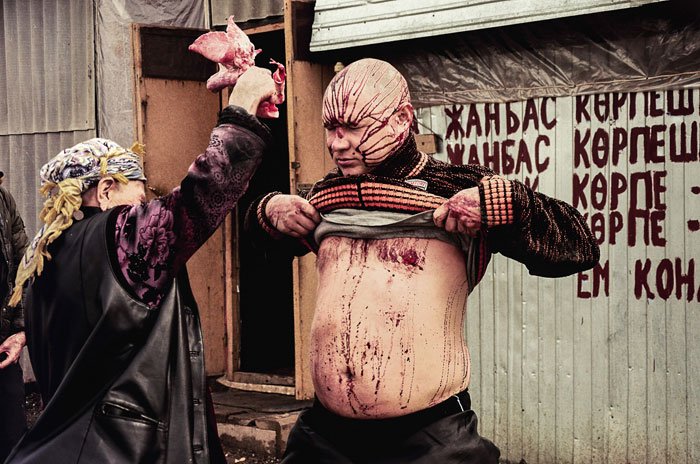
A rare shamanistic tradition is documented in Kazakhstan in the above image.
As previously noted, Winkelman called initiatory death and rebirth a requisite for shamanistic practice, and it is one that is also key in ritual abuse in terms of trauma used to create alter personalities.
The death/rebirth experience described by Winkelman in his definition of the practice can be seen in the severe dissociation and out of body experiences associated with ritual abuse, with the "rebirth" also figuratively represented in the creation of alter personalities.
Not all shamans experience altered states due to ritual abuse, but many of them did suffer a great deal in childhood via natural causes such as illness, injury, etc. This would have created the first "natural" shamans, and many practices to reach those states do not involve abuse-induced trauma, but do involve dance, music, pain, exhaustion, etc. This is one reason I have emphasized that ritual abuse takes place in the body. This is why performance art and dance are so intimately tied to ritual abuse - they are forms of ancient practices that induced altered states, which can only be achieved through the altered experience of the body.
A major difference between initiatory ordeals undertaken by shamans and the trauma of ritual abuse, is that shamans go through some type of painful event/injury or ceremony by choice(or accidentally), often just before or during adolescence. Similar rituals involving pain, like the Native American Sun Dance, are not ritually abusive despite the induction of altered states, because it is performed by consenting adults, of their own will.
To a lesser extent, such initiations can be compared with fraternity/sorority hazing rituals or military boot-camp, both of which involve discomfort in order to cement a bond within a group.
Below: Sun Dance, image via Encyclopedia Britannica
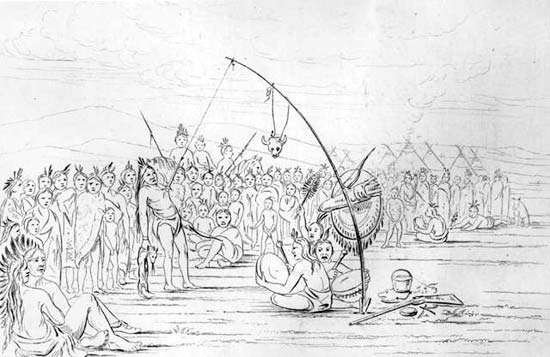
In many cultures, such painful events are not intended to produce lasting PTSD-type trauma, but are a method of inducing an altered state of consciousness, with sun dancers hoping to be given what they term a 'vision.'
The similarity between painful rituals in shamanism and the trauma of ritual abuse begins and ends at the fact that they both involve the creation of altered states (in the body )through pain in the body. After such metaphorical death and rebirth, the initiate is sometimes given a new name. There is every possibility that this practice is an embryonic version of the completely split personality created by ritual abuse.
Meanwhile, the difference between these methods and ritual abuse is clear: in ritual abuse, unlike initiations and shamanic practice, children are traumatized without their understanding or consent, as it is in this early stage of development that true alter personalities can be created - and reinforced. In contrast, an initiation happens once to a consenting teenager or adult, and afterwards is over.
In ritual abuse, the 'death and rebirth' takes a young child much closer to the threshold of death than would be the case in any non-abusive shamanic practice. The concept of transformation through such dissociative splitting of the psyche through multiple extreme 'deaths and rebirths' has often been linked with the image of the monarch butterfly in pop-alternative-culture. Such extreme and near-deadly abuse often induces an out-of-body experience, which also ties into Winkelman's concept of "flight" in shamanism.
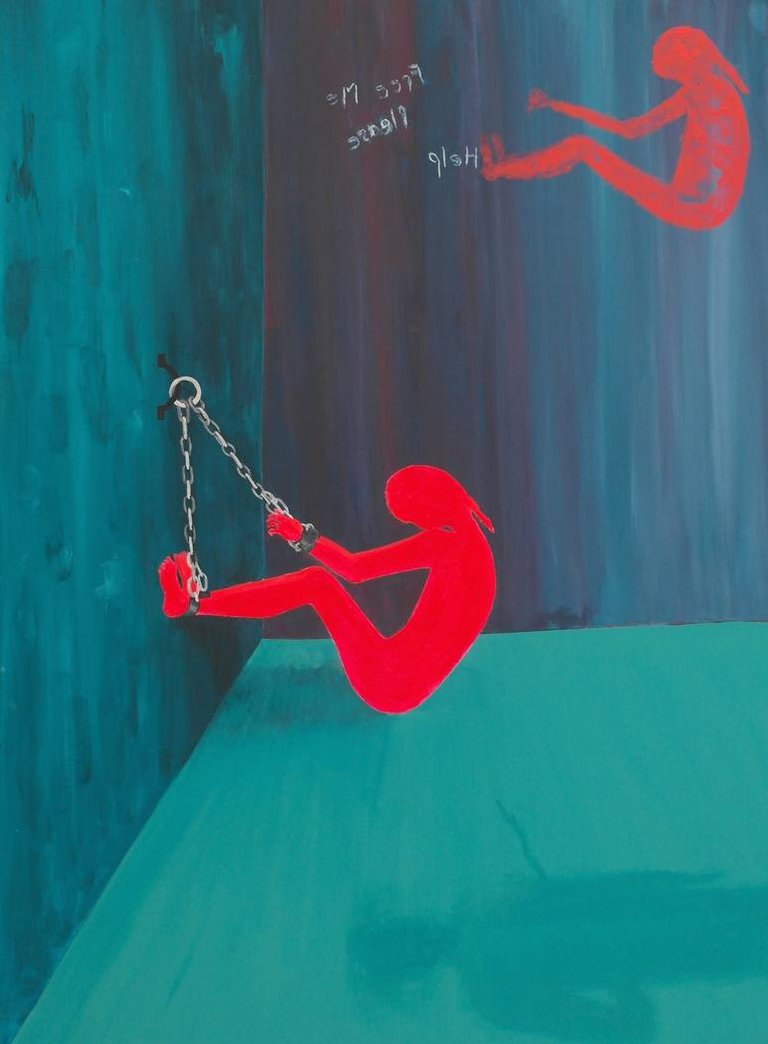
The above image is a painting by Ria Pratt, an alter-personality of Kim Noble, who paints traumatic abuse as a form of catharsis. We can see clearly in the image, and in a number of similar paintings by Ria, that the abused child is shown to be experiencing a trauma-induced out of body experience.
In some of Dionyso's pieces, as in the work pictured below, a number of figures are wearing animal masks, which again evoke Winkelman's description of animal-tied shamans. This work in particular is significant not only because it shows the use of masks in ritual practice (and we know Dionyso owns such a mask), but also because Dionyso himself has tagged the image with: #deathandrebirth, #shamanism and #ritual.

Winkelman directly correlates the human ability to dissociate with the development of Shamanism, writing: " Dissociation as exemplified in spirit possession provides a further distancing from apparent self-interest. McClenon pro-posed that dissociation facilitated hominids’ ability to cope with stressful experiences, with the ability to dissociate a key to evocation of placebo responses that enhanced survival and reproduction, leading to selection for genotypes that could benefit from shamanic healing."
One example of a shamanic deity who goes through near-death and rebirth is the Norse god, Odin, who has been described in an Encyclopedia of Ancient History in ways that almost perfectly conform to Winkelman's definition. Part of Odin's path to becoming a shaman involved a ritual death and rebirth in order to bring runes to humanity which has been described as follows:
"Odin hung himself from a branch of Yggdrasil, pierced himself with his spear, and peered downward into the shadowy waters below. He forbade any of the other gods to grant him the slightest aid, not even a sip of water. And he stared downward, and stared downward, and called to the runes."
"He survived in this state, teetering on the precipice that separates the living from the dead, for no less than nine days and nights. At the end of the ninth night, he at last perceived shapes in the depths: the runes! ... Having fixed this knowledge in his formidable memory, Odin ended his ordeal with a scream of exultation."
The importance of such a near-death-experience in shamanism and in ritual abuse cannot be over-stated.
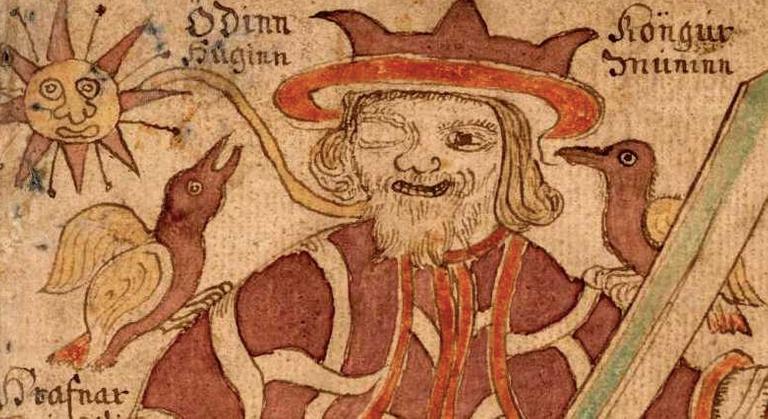
Given all this it is unsurprising that figures like Svetlanka Bakushina, who I have discussed at length previously, explicitly conveys ritualistically abusive themes in her work along with the inclusion of runes, and shamanism.
The definition provided by Winkelman and cited throughout this text stipulates that a core aspect of shamanistic traditions is the belief in sorcery, divination, healing power through shamanism, and the belief in the destructive power of the same.
This is of massive significance - survivors of ritual abuse often describe belief systems in which the soul can be stolen or removed, and sometimes are made to believe that an alter is a demon. Some of the belief systems that have to do with the idea of supernatural damaging abilities on the part of the cult have mixed over the decades with MKULTRA practices, for example, convincing children that bombs are placed inside them.
While this aspect of shamanistic traditions is fundamental to the development of ritual abuse, it is one of the most difficult to discuss with concrete examples - and there is very little evidence to be found of such beliefs in the work of someone like Dionyso. This is not to say that the beliefs don't exist, but that very few people are simply going to plaster such beliefs in public.
We do see examples of the belief in shamanic power to heal and harm in traditions like those of The Navajo, who clearly define the difference between those who use their powers for healing vs harm. In Recovering the Word: Essays on Native American Literature, edited by Brian Swann, Arnold Krupat, negatively oriented sorcerers are given the moniker "skin walkers," as they are said to transform into animals. Skin Walkers are said to use Navajo healing prayers in an inverted fashion, so although this example does not provide us with a fully-fledged independent ritual abuse tradition, it does give us a glimpse into the kinds of beliefs that correspond with the sense that practitioners would have the ability to cause harm through ritual/spiritual means.
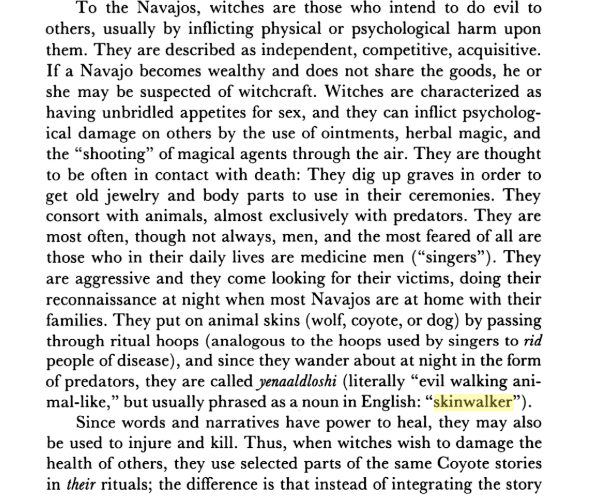
The site 'Navajo Legends' outlines the belief:
*"Many Navajos believe skinwalkers walk freely among the tribe and secretly transform under the cover of night. The term yee naaldooshii literally translates to “with it, he goes on all fours.” According to Navajo legend, a skinwalker is a medicine man or witch who has attained the highest level of priesthood in the tribe, but chose to use his or her power for evil by taking the form of an animal to inflict pain and suffering on others."
"To become a skinwalker requires the most evil of deeds, the killing of a close family member. They literally become humans who have acquired immense supernatural power, including the ability to transform into animals and other people. According to the Navajo skinwalker legend, these evil witches are typically seen in the form of a coyote, owl, fox, wolf or crow – although they do have the ability to turn into any animal they choose."
Another text, Navajo and the Animal People: By Steve Pavlik, William Tsosie describes the beliefs of the Navajo regarding skinwalkers in terms that sound very familiar to typical ritual abuse experiences.
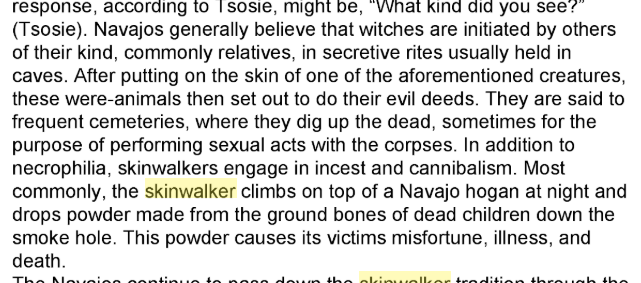
While these specific beliefs do not manifest in Dionyso's art directly, beyond statements like: "This Sax Kills Fascists" in many of his works since Trump's election, in addition to violent depictions of Trump being beheaded.
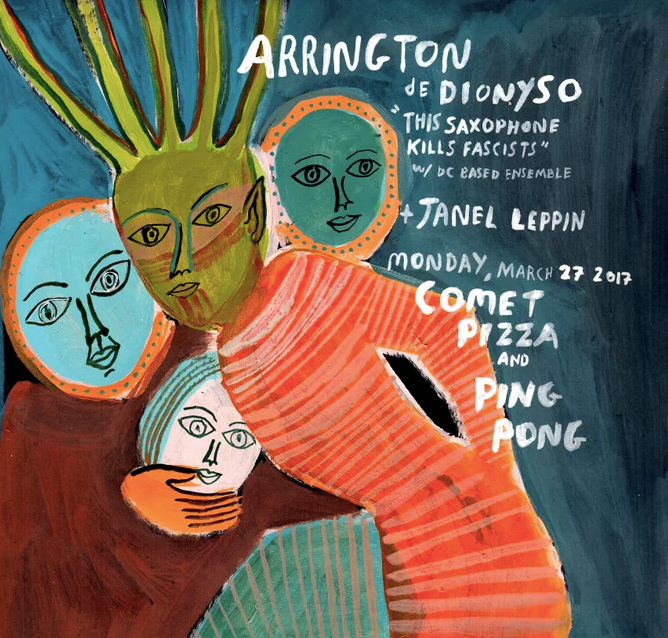
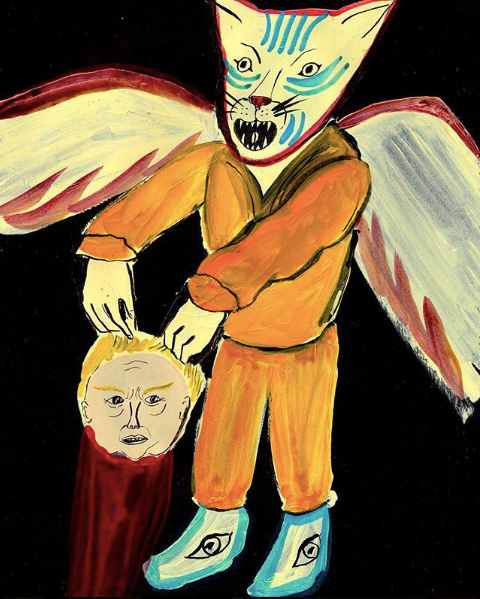
Other cultures with beliefs in the harmful power of a sorcerer include but are not limited to Haitian Vodoun.
On Arrington Dionyso's Youtube channel, he has specifically shared videos of Indonesian ritual trance dances and other rituals which fit Winkelman's description of characteristics of shamanism, specifically: "Communal ritual activities involving chanting, music, drumming, and dancing." The works also fit Winkelman's requisite alteration of consciousness. The trailer for Dionyso's "REAK: Trance Music and Possession in West Java TRAILER" is available below.
REAK: Trance Music and Possession in West Java TRAILER
In other videos, Dionyso can be seen creating a large piece of art, set to a type of throat-singing/circular breathing song. He also has videos of what are referred to as "ritual performances," including "I see beyond the black sun," and the truly bizarre Jaap Blonk at Thurston Community Media with Arrington de Dionyso and China Faith Star
Another video posted by Dionyso on instagram shows the adolescent trance dancers drinking from a bowl of liquid and plant material, which logically may contain some kind of mind altering substance, which fulfils another aspect of shamanism according to the previously discussed definition. In case the video is removed, a screenshot from the clip is included below:

These videos clearly do not show abuse, violence, cannibalism, pedophilia or other illegal behavior. However, as Dionyso was a focus of interest in connection with Comet Pizza at the beginning of the pizzagate scandal, I thought it was noteworthy that instead of symbolic imagery along the lines of Kabbala, Satanism, or Freemasonry, his art work, music and videos specifically mirror shamanic practices.
I've previously written about the central role of the body and somatic experience in ritual abuse. The body is where ritual abuse works, in the same way that any traumatic memory is held in the body. In that previous article, I discussed the central role of dance in altering consciousness and its use in ritual abuse.
Seeing the trance dances filmed by Dionyso is a critical example of the role of dance in what the Indonesian practitioners themselves call possession, which Adam Crabtree of Esalen has written about in connection with Multiple Personality Disorder.
Similar trance dances are seen in other traditions like those in Haiti and shamanic cultures across the planet. The fact that pizzagate researchers did not see or study this was a major loss of understanding regarding how ritual abuse cults (a minority sub-group of shamanic practice) actually function. In my previous discussion of the body and ritual abuse I addressed the sacred dances of Findhorn in the same way that I now interpret the Indonesian dances recorded and participated in by Dionyso.
In many cultures the altered state of consciousness in these types of dances is interpreted in terms of the individual dancer becoming an embodiment of a deity or spirit - or being possessed by that spirit. One can then understand that, in those minority strains of shamanism that are ritually abusive, the "possession" by a negative entity can easily be read as an early version of a negative alter personality as seen in dissociative identity disorder (multiple personality disorder). One can also imagine how, over eons, a system might develop wherein multiple alters have specific cult-related functions. This process of creating alters for different cult functions has been described by numerous ritual abuse survivors.
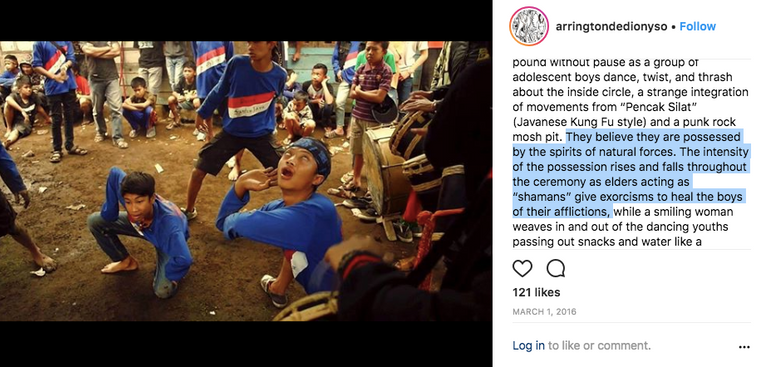
Dionyso himself clearly labels his art -- which caught the attention of pizzagate researchers -- shamanistic.Many of his instagram posts include hashtags like #tranceritual, #shamanism, etc.
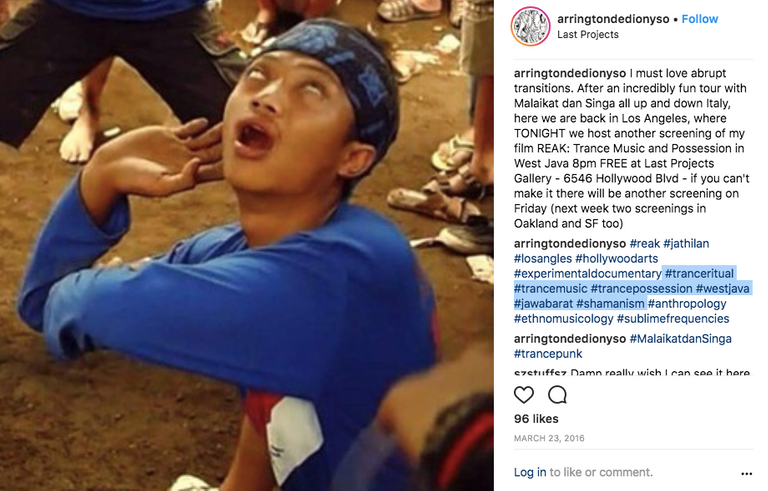
These rites induce altered states attributed to possession, and it has long been my position that ritual abuse is a fundamentally shamanic practice, no matter what aesthetic it wears. By understanding the significance of Dionyso's namesake, combined with the content he shares on social media, we gain a deeper understanding of this issue, which was missed entirely by pizzagate researchers.
In the following image of a work by Dionyso, we see what looks like a primitive mask (where a human heart should be) in the hand of a person who has just punched the heart out of another. In an artistic sense, one could interpret this in terms of turning one's heart into a mask or facade.
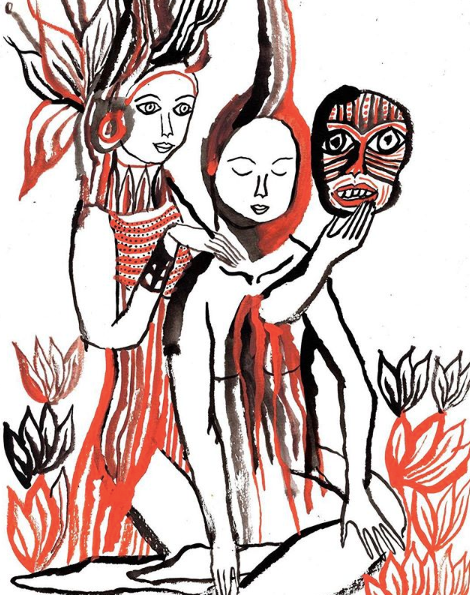
In literal terms, the image identifies the theme of human sacrifice in specifically pagan or primitive terms. While the primitive appearance of the figures and mask in the piece is an example of aesthetic, like pentagrams or inverted crosses, it is important to note this imagery. Unlike occult, Masonic or Kabbalistic symbolism, the imagery of primitive cultures is often ignored by researchers even when it is blatantly included by the same people those researchers claim are depicting ritual abuse themes.
The method depicted in this scene is the removal of the victim's heart. This is a method, a practice, which would be the same no matter what aesthetic it takes place in - from the bowels of the Vatican, to a hut in Mongolia, to a ritually abusive masonic lodge, etc. It is also the same irrespective of time - heart removal today is the same action that it was 700 years ago at a Mayan or Aztec temple.
I hope that this example illustrates why I feel so strongly that method/practice is the key to unravelling the secrets of ritual abuse, not aesthetic. This also saves us from falsely accusing an entire culture that might have an aesthetic used by a minority of ritual abusers. By focusing on method, only those who actually abuse others can be classed as ritually abusive.
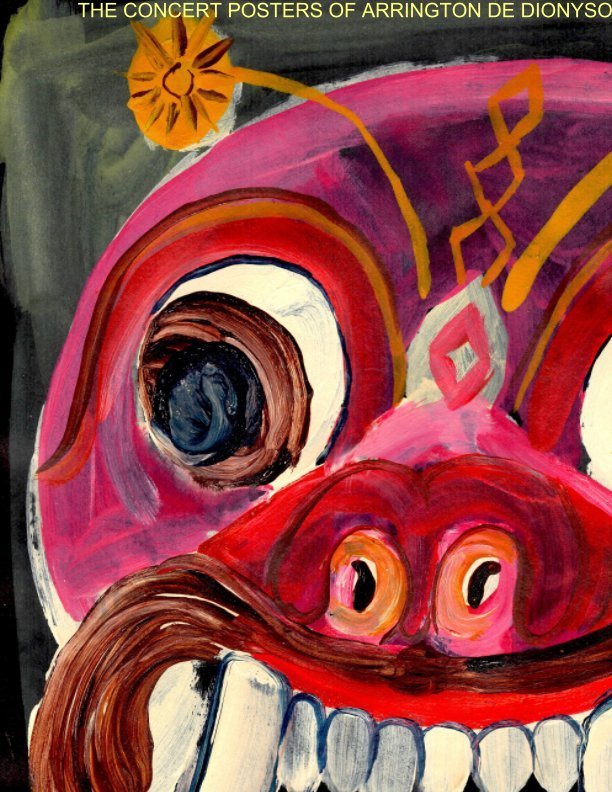
Another work (shown above) by Dionyso depicts a close up of a primitive mask: yet again, masks are often incorporated in the "traditional" conception of ritual abuse. Masks and full-body costumes are extremely common in shamanistic practices across the globe.
Dionyso has also included masks in a piece he labels #tantra #ritual #mask #shamanicart #shaman. The video from which the following still image was taken clearly depicts bizarre back and forth "dance" between two masked women set to Dionyso's "music."
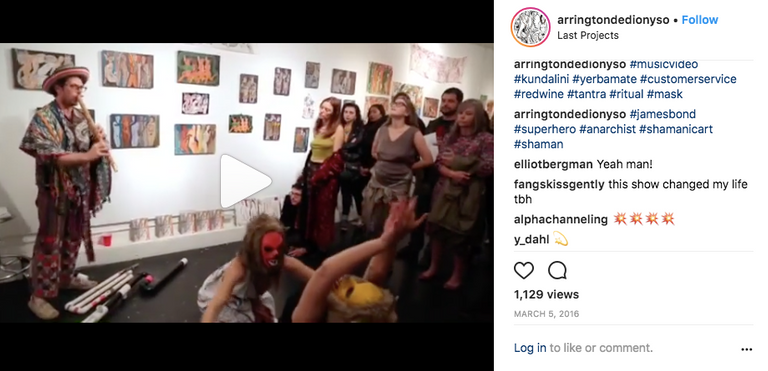
The "capacity to fly" is an extension of that out of body (OBE) dissociative experience, similar to OBE's that sometimes occur when a person is near death, or technically dies and is revived. Dancing along this fine line between death and life is an art fine-tuned for decades and centuries by those who understood its value.
We see often see winged figures in Dionyso's work that appear to be "flying," or are shown winged.
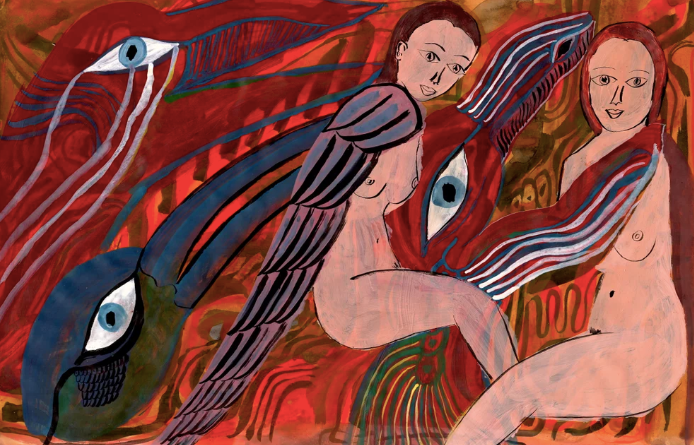
Remember: it is requisite that children are traumatized at a young age if multiple personalities are to be created: likewise, it is requisite that a shaman undergo a severe illness or catastrophe that likewise brings them close to death, either in childhood or adolescence. Kim Noble, whose work I will discuss later in this article, depicts what appears to be out of body experiences in multiple works containing deeply traumatic imagery, including a work titled "Happy Birthday."

By comparing Kim Noble's depiction of an out of body experience/splitting caused by trauma with Winkelman's definition of flying in shamanism, I hope to illustrate that when I speak about ritual abuse as shamanistic, I do not mean that I believe or am claiming that every & all shamanistic tradition or practitioner is ritually abusive. I am stating that all ritual abuse is essentially shamanistic at its core. Similarly, recognizing that a number of Catholic priests have molested children is valid, but does not require one to also argue that all Catholic priests are pedophiles.
Noble is also the focus of one of the initial mistakes of pizzagate researchers, especially in terms of the leads created - or mangled - by /pol/. Observers in those earliest days quickly noticed that Dionyso's work was evocative of the artwork of Kim Noble, who is herself a victim of severe trauma. She suffers from documented, severe multiple personality disorder.
The mangling of facts regarding Noble came when researchers misunderstood her artwork as connected to Comet Pizza. Noble's work is not, in any way, connected to that restaurant or to the Podestas, and never has been. This is beyond question, because Noble has never sold her trauma-related works. She is simply an abuse victim who works through her trauma by allowing her alters catharsis through painting the horrors she experienced.
This is not to say that Noble hasn't been abused ritually -- but it does mean that she is not connected to the Comet Ping Pong restaurant - or the Podestas. Though Tony Podesta is a collector of horrific art works,especially depicting the criminal sexual exploitation of children, he does not own a piece by Noble.
Pizzagate researchers conflated a visual similarity between some of Dionyso's (often childlike and crude) paintings with the work of Noble's child-alter, Ria Pratt. They confused this visual similarity with some actual connection to the Podestas, which then unfortunately led people to attack Noble, in essence attacking a victim of the same type of abuse they were enraged about.
Though she is not related to pizzagate in any way, Noble is one of few people in the public eye who is recognized to have multiple personalities, and she does depict scenes of ritualistic or mkultra-type abuse in some of her art works.
Even the pedophile-friendly BBC admits outright that Noble has multiple personality disorder(MPD), now known as dissociative identity disorder (DID).
The Telegraph explains that Noble's alters all have individual painting styles (which again goes to the point that for her, the horrific scenes she paints are not intended for the gaze of, used for titilation by the likes of Tony Podesta, but are a form of catharsis for her suppressed/split memories & emotions.)ITV recounts Noble's thoughts on painting as a way to 'meet' her alters
"I feel that part of them is on that canvass and that is the nearest I am going to be to meeting the people inside me... I don't see them paint, I'm not watching them paint, so just to then come out, wake up, and see the start of a painting, it can be really exciting, except Ria's that are not too nice, when I first saw them, it was disgusting."
Noble's art also includes what appears to be primitive/shamanistic depictions of human beings, which evoke both the decorations of indigenous peoples, and the dismembering that takes place in ritualistic cannibalism. She reveals the layers of organs, muscle and bones, stylized to sometimes blend into the decorative tribal patterns.
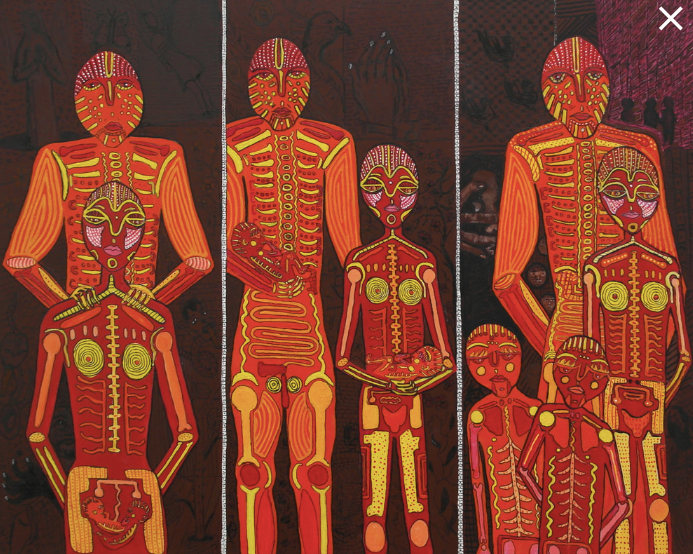
This mix of cannibalism and primitive body decoration is enormously significant because it suggests that, in a literal sense, the cannibalism may have been associated with some sort of body decoration or primitive ritual. For example, the alter painting this work chose not to present cannibalism in a typical "illuminati," masonic or inverted christian setting.
This is important, because it indicates - once again- that ritual abuse is often shamanistic and based on the rituals of ancient peoples, not an inversion of christianity and not related to ancient judaic beliefs or even masonic symbolism. this tribal element of ritual abuse is the key to understanding how it works, AND for understanding the evidence in plain sight of its existence. (Also note the faint drawings in the background of the brightly depicted people)
Returning to Dionyso, it is worth noting that in adition to his self-described "shamanistic" art pieces, he also produces work that displays traditional occult imagery, especially in relation to his artistic version of a tarot deck.He also makes references in the title of his works, like Witches and Birds
Below we see a devil or demonic figure holding the head of a (bizarrely passive - dissociative?) girl, with blood dripping from its mouth. This scene is much more traditionally 'satanic,' using the conventional appearance of the Western concept of a devil or demon. As the comments on the instagram post itself show, this is the type of image posted by Dionyso that got the vast majority of attention from Pizzagate researchers. It fits their pre-conceived expectation of what ritual abuse looks like. It's not that they are wrong -- it's just that they shouldn't have stopped looking at that point.
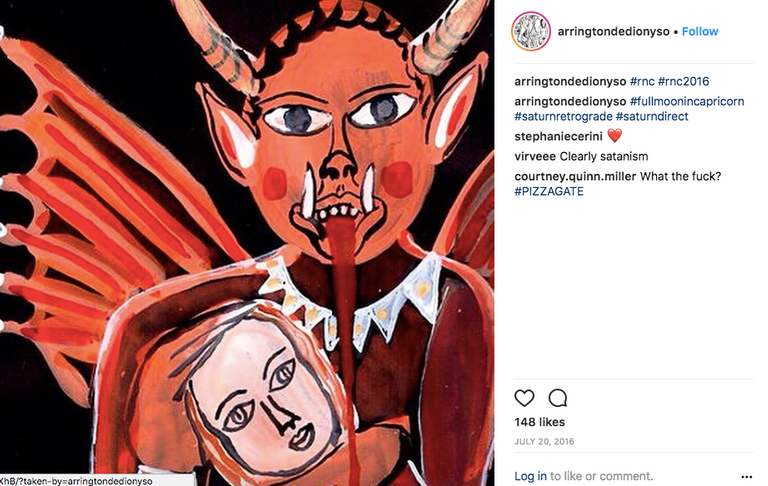
Below, we see Dionyso's depiction of two women with serene faces with one mounted on a male figure, who has an ouroboros bursting from his chest. In literal terms, the chest wound here is reminiscent of Dionyso's heart-removal image discussed earlier. Symbolically, as Dionyso states himself, the work depicts an ouroboros coming out of the man's chest cavity. This symbol falls readily into the category of "standard" occult symbolism. Encyclopedia Britannica describes the ouroboros:
"Ouroboros, emblematic serpent of ancient Egypt and Greece represented with its tail in its mouth, continually devouring itself and being reborn from itself. A gnostic and alchemical symbol, Ouroboros expresses the unity of all things, material and spiritual, which never disappear but perpetually change form in an eternal cycle of destruction and re-creation."
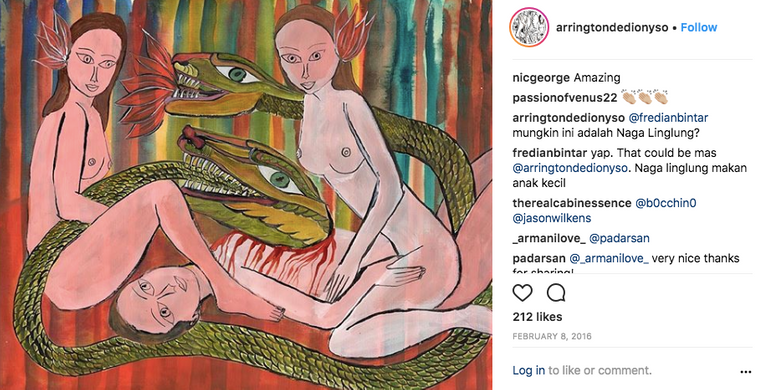
Dionyso's image, then, is depicting "eternity" (The Ouroboros) as simultaneously sex and death. A somewhat ham-fisted take on the inseparability of procreation and destruction, a concept also found in the Hindu and Buddhist world views.
The entry given by the encyclopedia provides the following image and description of the Ouroboros as a reference:

"The serpent Ouroboros surrounding a circle with lettering in Latin and Hebrew, pen and watercolour drawing from Clavis Inferni sive magia alba et nigra approbata Metratona (late 18th century; called the Black Book) by M.L. Cyprianus. The Black Book, a sourcebook for spells in the black arts, was the textbook of the Black School at Wittenburg, Germany, purportedly where witches and sorcerers went to learn black magic. Wellcome Library, London"
That Dionyso creates images like this does not detract from the importance of shamanism in his work, but actually strengthens my point that those who are depicting "classic" ritual abuse themes are highly interested in primitive shamanic practices and cultures and that the understanding we get about their method from this interest is critically important in moving towards some type of understanding of the mechanics of ritual abuse in addition to its imagery.
If it weren't for the conventional ritual abuse imagery in Dionyso's work, he would never have gotten the attention of pizzagate researchers in the first place. This article is not meant to condemn their interest, quite the opposite - I wish that they would expand and deepen that research.

While not all shamanism is abusive, harmful or negative, the method of ritual abuse is always shamanic. No matter what aesthetic it wears - masonic looking ritual abuse, inverted catholic ritual abuse, satanic ritual abuse, it is ALL SHAMANIC in terms of method. The bells whistles and individual settings or "religions" may change, but the way shamanism works does not.
An inverted cross, or a pentagram, or any other well-known symbol of the occult can sometimes act as a distraction or a smokescreen: it is an aesthetic, not the core of the practice itself. It veils the reality, the truth of an ancient practice which is not an inversion but a mind altering experience which has nothing to do with a profession of a faith and everything to do with what happens in your own self and body. When people are busy looking for satanic, judaic, or masonic symbolism, they miss the most blatant evidence which was staring them in the face all along.
I am fully aware of the fact that saying this obvious truth will then prompt everyone who has ever loved the idea of shamanism, of neopaganism or wicca, to respond with angry denials that ritual abuse is fundamentally and always shamanistic. However, again, I am not stipulating that all shamanism is ritual abuse, I am not stating that all shamanism is evil or even negative or harmful.
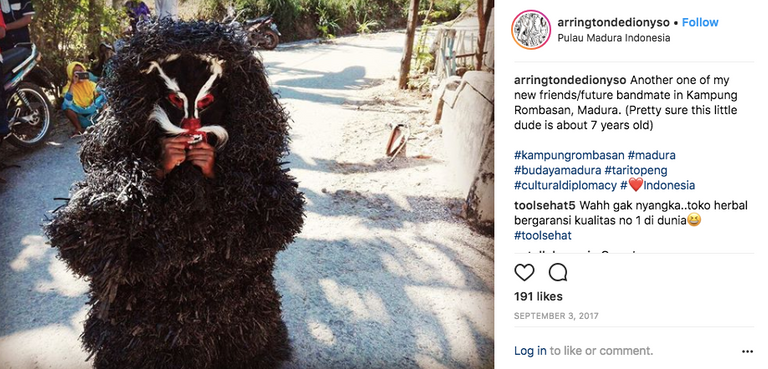
I would liken the practice of inducing altered states to any tool - the value of the tool as "good" or "evil" depends on how it is used and for what purpose and by whom. I can use a bread knife to cut bread and go abut my day, the bread knife is not evil. Another person may take a knife and hack someone's head off with it. Those two vastly different outcomes do not negate the use of a knife in each scenario. Both actions used knives. The violence of using the knife to kill does not mean that every time one uses a knife, it is to kill, violent, evil, or harmful.
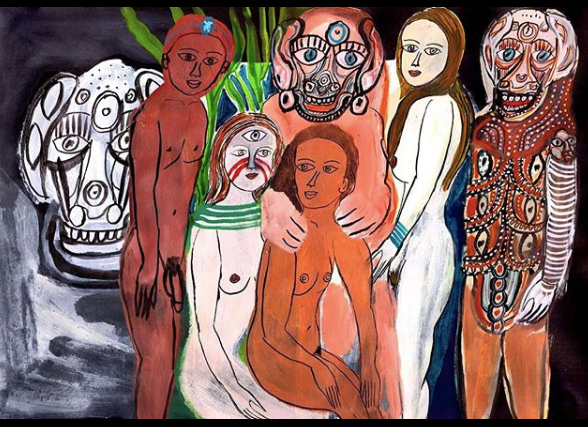
Hence, the public MUST understand that when they see ritual abuse they are seeing shamanism, if they are ever to hope to be able to understand what they are seeing when they research this issue. If they do not understand this, then major evidence will be lost - not to censorship - but because the public did not understand what they were looking at. Again: this does not mean that every time you see a shamanic ceremony or practitioner you should assume they are abusive.
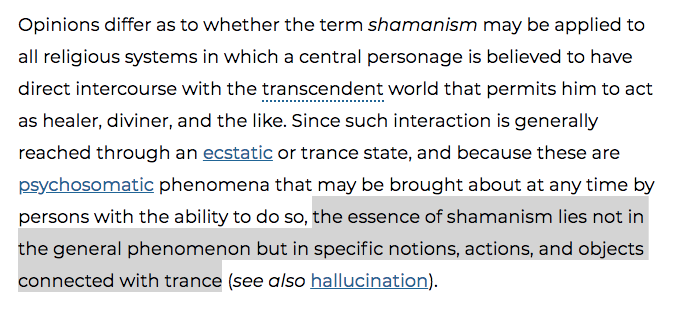
Even the most basic definitions of shamanism also reference the fact that it is not the aesthetic imagery of any culture that defines shamanism, but the specific characteristic methods of practice involved that induce trance (altered state of consciousness), which was also noted by Winkelman:
That multiple essential aspects of Shamanism (according to Winkelman) are presented repeatedly in Dionyso's work increases the strength of reading its possible ties to ritual abuse in terms of that practice. It also amplifies the significance of the loss when investigators fail to recognize the importance of this evidence.
Curated for #informationwar (by @wakeupnd)
Our purpose is to encourage posts discussing Information War, Propaganda, Disinformation and other false narratives. We currently have over 7,500 Steem Power and 20+ people following the curation trail to support our mission.
Join our discord and chat with 200+ fellow Informationwar Activists.
Connect with fellow Informationwar writers in our Roll Call! InformationWar - Contributing Writers/Supporters: Roll Call Pt 8
Ways you can help the @informationwar
Also, check out our meme contest:
https://steemit.com/informationwar/@informationwar/memewar-contest-expose-the-msm-s-lies-on-president-trump-s-immigration-policy
Thanks so much!
Just discovered you're back, good to see you posting again! Excellent work @whitedeer9217
Thank you so much! :)